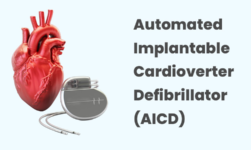Writing a thesis paper can be pretty rewarding for you. You spend years in your field, learning and researching. Then you wonder about a research problem that has been on your mind since you started college. Now you have your platform. Your voice. Your canvas. To paint that research question into a proper thesis paper.
What are the aspects that you have to cover in this research paper? What should be the writing tone and style? What are the basic elements of a thesis paper? These are questions that come to your mind before you start.
Think of it as divide and conquer. Nothing is impossible if you just put your mind into it and get organized with the compilation. In this post you will review and learn the six essential parts of a thesis paper and their significance.

1. Introduction
The introduction chapter comes after you have written your abstract, which are about 100 words of summarization of your thesis paper. The introduction is basically declaring your research topic. What your research is? Why you want to do it? And how you will conduct your research?
The introduction is one of the most important chapters of your thesis paper, it is the first-hand knowledge your reader will get about your research. Therefore, it has to be just perfect. It should provide complete information about the significance of your study. The methodology of your study should be briefly mentioned in the introduction.
2. Literature Review
The chapter of literature review holds the most value in terms of showing the background of the research. Literature review means any source of information and data over the researches similar to yours. In fact literature review is referred to past papers.
No thesis paper can be written without the help of past papers. When a student wants to work on a research, they have to look into other similar researches that have been done in the past. To know the methods and the results those were achieved. These results and methods need to be known to the student, they have to use that research as a reference and quote the author.
Some of sources that students use are; Books, thesis papers, journals, television, oral history, experiments, articles etc.
There is no limit to what can be a part of literature review. As long it provides relevant information about the research, it can be used.
3. Research methodology
The research methodology as the name entails is the research method and design used by the student. It is the framework through which the researcher achieves their results. How you gather the information or data and how you have analyzed it will be mentioned in this chapter.
How you begin your research? What methodology you used? What design suited your research best? Also were the findings a success.
There are two main types of research methodologies; Quantitative and Qualitative.
The quantitative methodology is the method that allows the researcher to get their information in numerical form. There entire study method id extremely objective. There is no place for human feelings and emotions. The answers for the quantitative methodology only require a “yes” or “no”. There is no need for reasoning to your answer.
The Qualitative methodology is the second method that is completely different from the quantitative method. Its main objective is to get the details about an event or topic. The question “why” is answered in qualitative method. The research method is very subjective and requires tons of reasoning for every question.
There is another hidden methodology that is called the mixed research methodology, where you can get the best of both researches. But you can only choose this research methodology when your study requires it. If you feel that you have to use both methods to get the answers you need, this can be determined when you would need to collect the data.
4. Data Collection or Results
The data collection and it results is discussed in this chapter. You will tell the readers what data collection method you have used for your thesis. The data collection methods that have you used will solely be based on the research methodology approach you took. If you picked a quantitative research approach then the data collection tools will be; close ended questionnaires, experiments, surveys and secondary data.
Whereas if you have picked the qualitative research approach to make your thesis paper then the data collection tools you use will be; oral history, one on one interviews, open questionnaires and basic observations. This data collection method requires much more time and resources. Sometimes the researched spend days with the research participants to gather information.
In the mixed research approach, the researcher utilizes both methods of data collection. You use the tools according to the type of data you require.
5. Conclusion
The conclusion wraps up the research, starting from the introduction, till the data results. Every chapter is covered briefly. Proving your research was helpful and worth doing. You need to show the significance of your research. Mentioning the objective of your research and how you proved it with your research.
Many students fail to make a good conclusion due to lack of motivation. By the time the students reach their conclusion. They have given up on the process since a thesis contains 60,000 to 80,000 words. With the amount of pressure there is on students to make a strong thesis paper, many opt for master thesis writing help – The Research Guardian to reduce the stress.
6. Reference list or Bibliography
The reference list or the bibliography list is added to the end of every thesis paper. Every research paper mentions another author’s work for reference. Most of this is done in the literature review. When a student adds another authors words in their Best thesis writing service, they are added in quotations along with the publication date in parenthesis. This process is called in-text citation.
For example
“The conditions of Sudan women are become dire every day without any food and basic medical supplies the process childbirth has become harder” (Stevenson, 2017)
The reference is then made in detail at the end of thesis in the form of a bibliography list. This list contains all the information the reader would require when they want to see where the research got their information from. Or they simply want to read what the author has written over the topic.
You have to pick the reference style according to your university’s requirement. There are approximately four reference style HARVARD, OSCOLA, APA and MLA. These are the most widely used
Did you find this post interesting? Do you think you will be able to write your own master thesis paper now? Good Luck!
Author Bio:
I am Lauren Olivia and I am a PhD in human resource management and a research supervisor. Seeing my students’ struggles with the research proposal, I decided to write this blog to help the students write better research proposals for their HRM thesis.
Author’s note: This post covers what I teach my students in class when briefing them on how to write a research proposal and since, I have started giving them these points, I have observed the quality of their proposals have gotten better.






